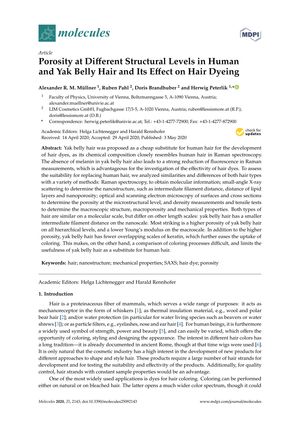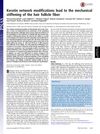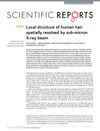Porosity at Different Structural Levels in Human and Yak Belly Hair and Its Effect on Hair Dyeing
May 2020
in “
Molecules/Molecules online/Molecules annual
”

TLDR Yak belly hair has higher porosity and is less stiff than human hair, making it absorb dye better but less suitable as a direct substitute for hair dyeing.
The study investigated the potential of yak belly hair as a substitute for human hair in the development of hair dyes, due to its similar chemical composition and reduced fluorescence in Raman spectroscopy. Various methods were used to compare the two hair types, including Raman spectroscopy, small-angle X-ray scattering, microscopy, density measurements, and tensile tests. The findings revealed that while human and yak belly hair are similar on a molecular level, they differ significantly in other aspects. Yak belly hair exhibited a smaller intermediate filament distance at the nanoscale, higher porosity across all structural levels, and a lower Young’s modulus, indicating less stiffness. The higher porosity and fewer overlapping scales on yak belly hair facilitate dye uptake but also complicate the comparison of dyeing processes with human hair, limiting its suitability as a replacement.


